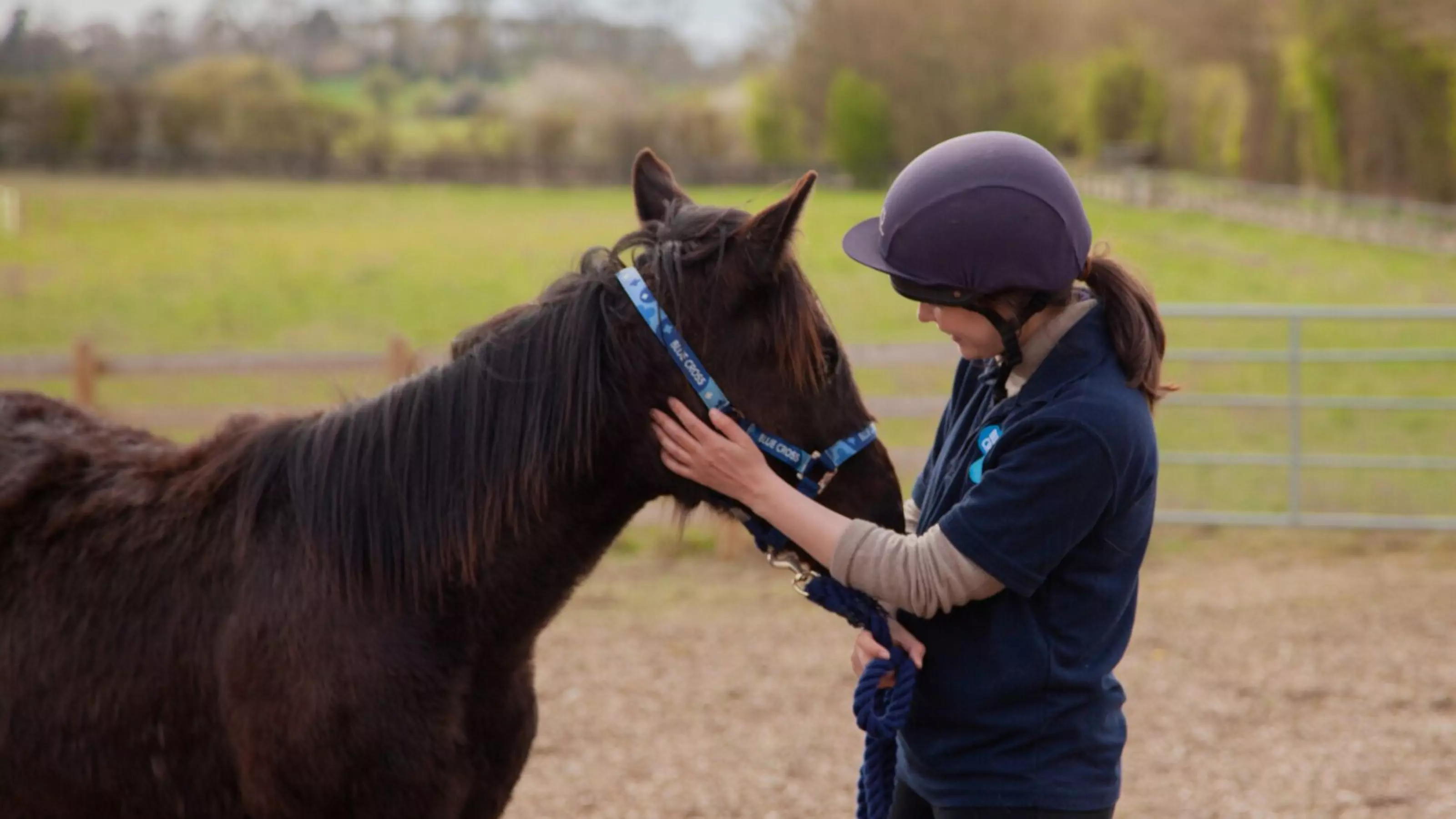
Teaching your horse to target
Target training is a great way to start trick training with your horse.
Teaching your horse to target is a great way to introduce training into your daily routine. Interacting with your horse in this way can provide extra enrichment, but it can also help to guide your horse in unfamiliar situations.
Target training is best used in combination with clicker training. A clicker helps your horse to link the desired behaviour with their reward. Since you'll usually have your hands full with your horse, you can click with your tongue, or you can use your voice for an enthusiastic “yes!”. The click sound should be unique to targeting and not one you use when riding.
When teaching your horse a new trick, it's also helpful to use their favourite reward. While some horses may enjoy a tasty treat, others prefer a good scratch on the withers or shoulder. Not only does this help with your training, but it's an important time to build and maintain your bond with your horse or pony.
Important
If your horse is motivated by food, make sure that their favourite foods are a suitable size to prevent them from choking. Do not use carrots or other vegetables cut into discs as these can easily become stuck in the oesophagus.
What you’ll need:
- An easily moveable object, such as a plastic plate or cone
- Small treats (optional)
- A clicker (optional)
How to target train your horse
Step one
Stand beside your horse with your chosen object. Show the object to your horse at arm’s length, but make sure not to touch their nose with it. Say the cue “touch”.
Step two
When your horse decides to touch the target with their nose, hide the object and reward your horse straight away. If you're using a clicker to train your horse, click when they touch the target with their nose.
If your horse is more timid or uninterested in the object you can reward them for smaller movements towards the object, such as reaching towards it. This shows them that they’re on the right track.
Step three
Repeat step two for no more than ten minutes per session. Give your horse a sufficient break after your training session. You can even resume target training the following day. Your horse may need a couple of repeated sessions before they are confidently targeting the object when cued.
Step four
Once your horse has learned to touch the object at nose level, you can move on to this step. Hold the object at different heights and give the cue "touch". If they are consistently touching the object when cued, you can try moving it further away from your horse.
Tip
Throughout the training session keep a close eye on your horse's body language. If they’re getting bored or frustrated, stop the session and give them some space. Since horses have a short attention span, keeping training sessions short prevents them from getting bored or frustrated with the task.
How is target training useful?
At Blue Cross, target training is a useful way of working with our horses. Through these short training sessions the horse welfare team can build a bond, which is essential for new horses or horses lacking in confidence.
Once an equine is confidently targeting an object, the team can also use this approach to introduce them to challenging situations. If your horse finds something worrying – such as loading into a trailer – practice targeting an object nearby. This can break down an unfamiliar situation into smaller steps, with rewards given along the way. After building their confidence over a few sessions, you can ask them to target the object in the trailer.
Page details
Published
• 30 August 2023
Next review
• 28 August 2026





